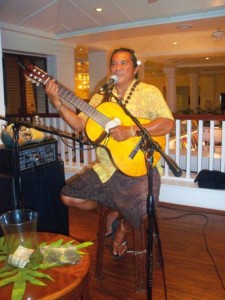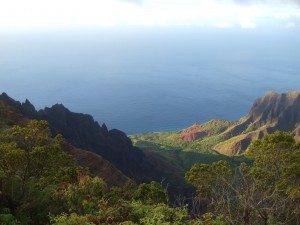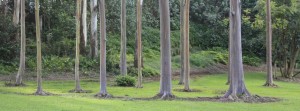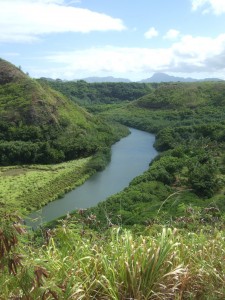Vibrations, Frequency and Harmonics defines the life of Makepa.
Music is the life of local artist Makepa. Since 1972, Makepa performed at various venues throughout Kaua’i: from strumming his ‘ukulele in the old Kaua‘i Surf days to performing live at Shutters Lounge today, Makepa did it and saw it all.
“Music was the inspiration of my mom. That’s how I started my career as an entertainer. I want to point out that I worked on the river tours for 27 years. The river tour started from Wai‘ale‘ale then went into Smith’s boats. Back in those days, in order to make money on the river boats, you had to play guitar, but I only played ‘ukulele at the time. I thought it would be impossible because I’m left handed, and it took a lot of practice for me to master the guitar. The guitar was the last instrument I learned.”
Catch Makepa performing at Shutters Lounge on Mondays and Tuesdays from 7 to 10 p.m. Since 1972, Makepa has entertained throughout various venues on the island of Kaua‘i with music that is straight from the soul.
Full interview can be found @ http://thegardenisland.com/entertainment/night-life/makepa-entertaining-from-mauka-to-makai/article_b24d7ca4-ee58-11e1-b684-0019bb2963f4.html





Recent Comments